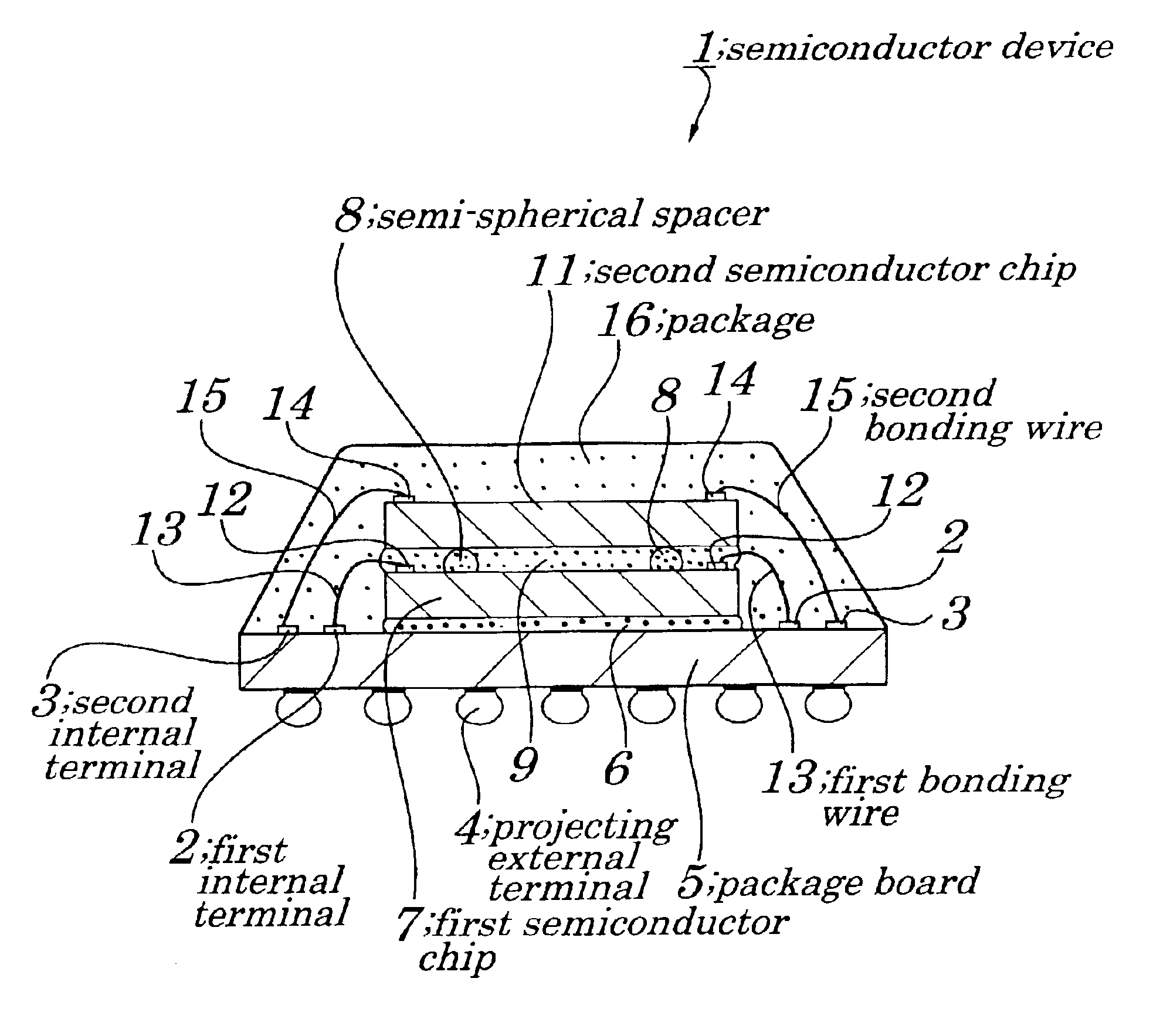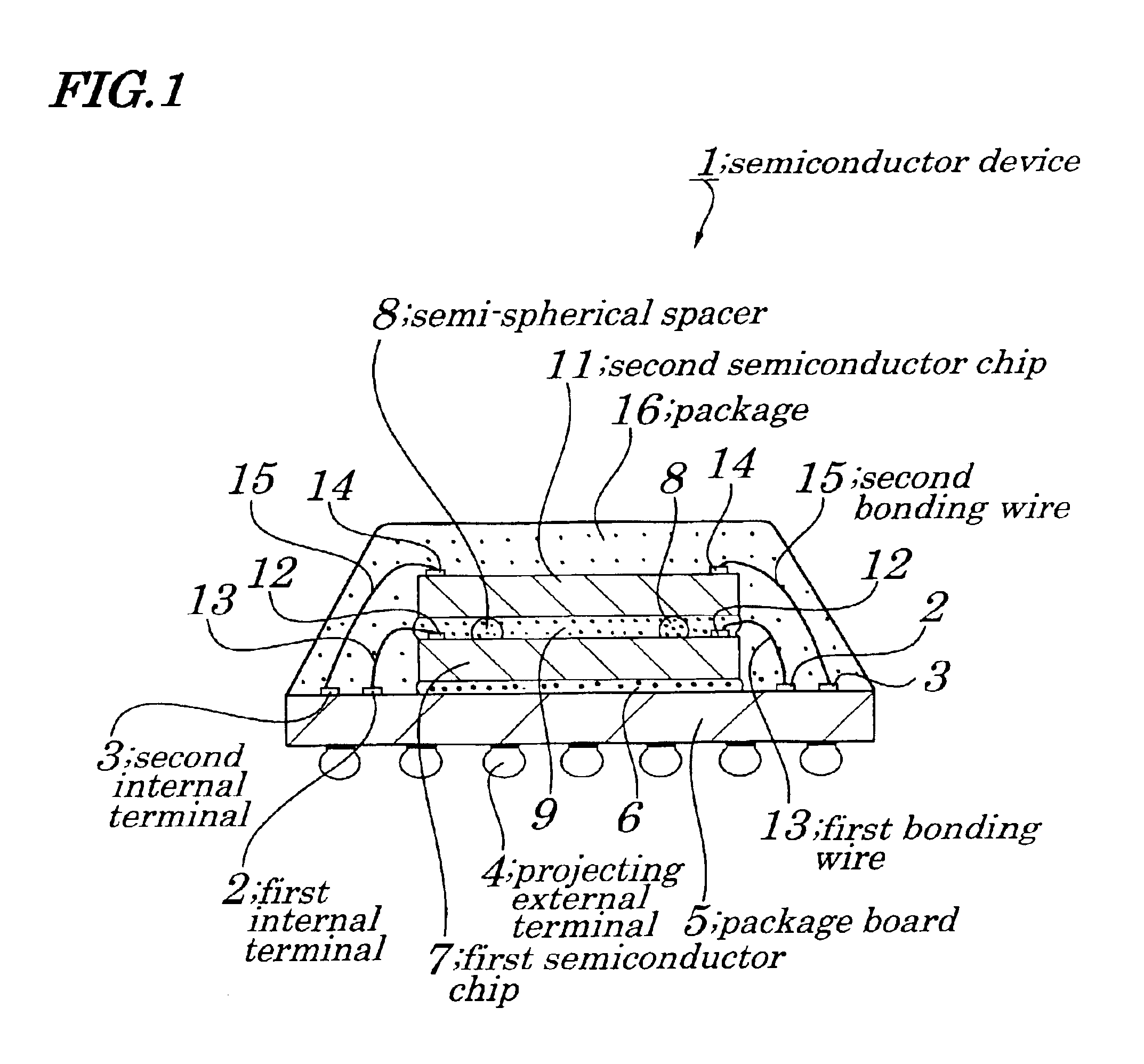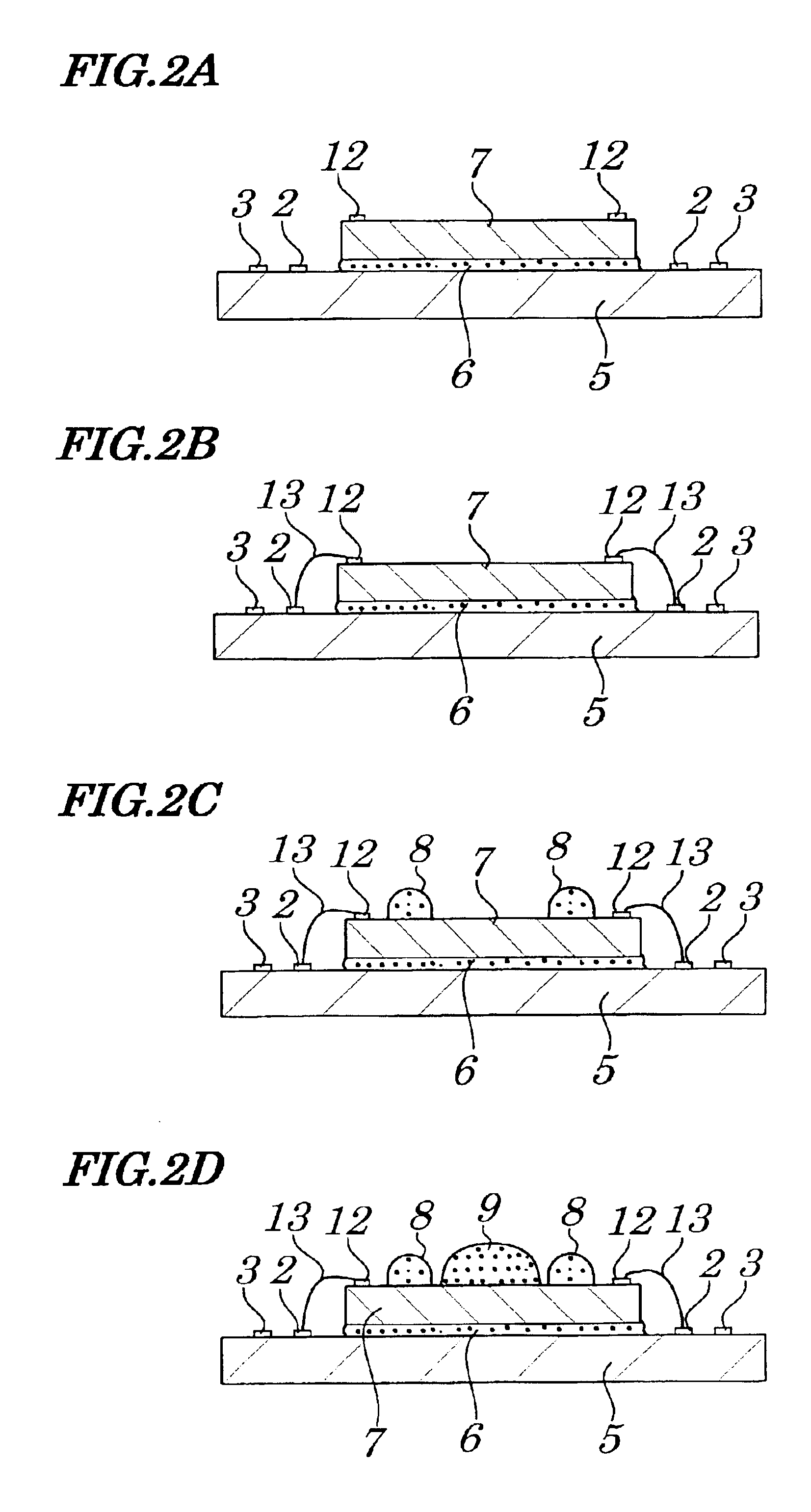Semiconductor device and method for manufacturing the same
a technology of semiconductor devices and semiconductors, applied in semiconductor devices, semiconductor/solid-state device details, electrical apparatus, etc., can solve the problems of reducing reliability, difficult to realize a thickness of about 100 m or less essentially, and the device itself is also expensive, so as to achieve uniform spacing and improve reliability.
- Summary
- Abstract
- Description
- Claims
- Application Information
AI Technical Summary
Benefits of technology
Problems solved by technology
Method used
Image
Examples
first embodiment
[0092]FIG. 1 is a cross-sectional view showing a configuration of a semiconductor device according to a first embodiment of the present invention; FIGS. 2A to 2G are flow diagrams for showing a first method for manufacturing the semiconductor device according to the first embodiment, along steps thereof; and FIG. 3 is an illustration for outlining one step of the first method for manufacturing the semiconductor device according to the first embodiment. As shown in FIG. 1, a semiconductor device 1 according to the present embodiment includes a first semiconductor chip (lower-layer semiconductor chip) 7 which is made of silicon and mounted (fixed) using an adhesive agent 6 on a package board 5 having a plurality of first internal terminals 2 and another plurality of second internal terminals 3 which are both formed on a right side of a surface thereof and a plurality of projecting external terminals 4 which is formed on a back side of the surface thereof; a second semiconductor chip (...
second embodiment
[0116]FIG. 7 is a cross-sectional view showing a configuration of a semiconductor device according to a second embodiment of the present invention. A semiconductor device 10 according to the present second embodiment greatly differs in configuration from that according to the above-mentioned first embodiment in a respect of stacking first and second semiconductor chips 7 and 11 one on the other via an insulating sheet 23.
[0117]That is, as shown in FIG. 7, in the semiconductor device 10 according to the present embodiment, the second semiconductor chip 11 is stacked on the first semiconductor chip 7 having roughly the same size as that thereof via a plurality of semi-spherical spacers 8 and an adhesive agent 9 as well as an insulating sheet 23. This insulating sheet 23 is made up of such a sheet as to become adhesive when heated and adhered beforehand to a back side (a surface to be adhered to the second semiconductor chip 7) of the second semiconductor chip 11.
[0118]To manufacture t...
third embodiment
[0123]FIG. 8 is a cross-sectional view showing a configuration of a semiconductor device according to a third embodiment of the present invention. A semiconductor device 20 according to the present third embodiment greatly differs in configuration from that according to the above-mentioned first embodiment in a respect of stacking a plurality of semiconductor chips in a triple stacked manner.
[0124]That is, as shown in FIG. 8, in the semiconductor device 20 according to the present embodiment, a third semiconductor chip 24 is stacked on a second semiconductor chip 11 having roughly the same size as that thereof via a plurality of semi-spherical spacers 25 and an adhesive agent 26. In this case, the semi-spherical spacers 25 and the adhesive agent 26 are made of almost the same thermo-hardening resin as the above-mentioned semi-spherical spacers 8 and the adhesive agent 9 respectively. Furthermore, a package board 27 has an addition of a plurality of third internal terminals 28 formed...
PUM
 Login to View More
Login to View More Abstract
Description
Claims
Application Information
 Login to View More
Login to View More - R&D
- Intellectual Property
- Life Sciences
- Materials
- Tech Scout
- Unparalleled Data Quality
- Higher Quality Content
- 60% Fewer Hallucinations
Browse by: Latest US Patents, China's latest patents, Technical Efficacy Thesaurus, Application Domain, Technology Topic, Popular Technical Reports.
© 2025 PatSnap. All rights reserved.Legal|Privacy policy|Modern Slavery Act Transparency Statement|Sitemap|About US| Contact US: help@patsnap.com



